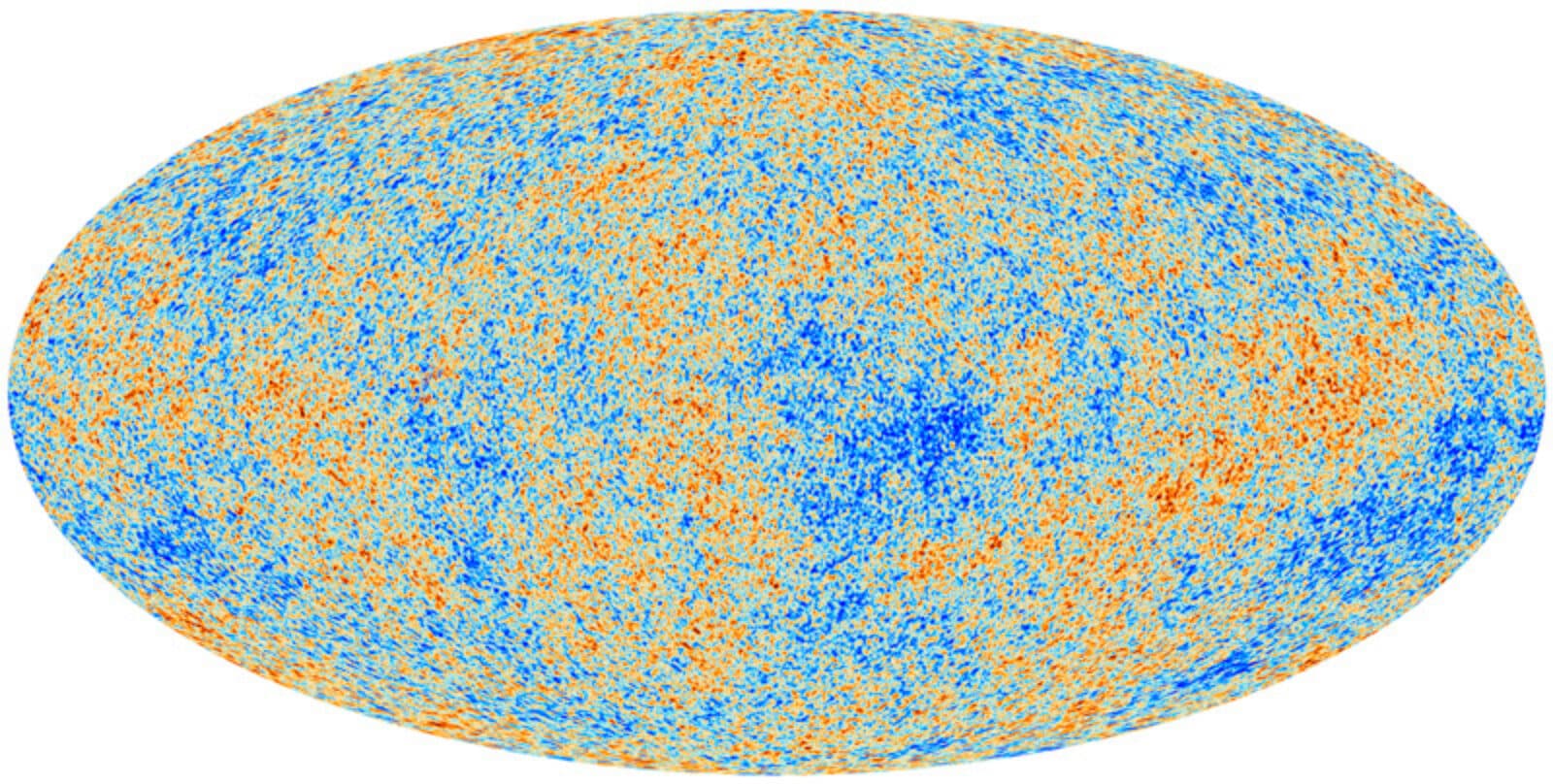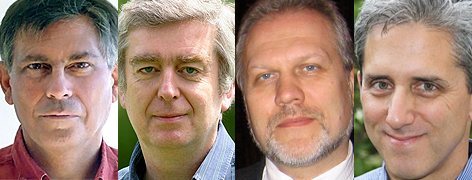Spotlight Live: A New Baby Picture of the Universe
by Bruce Lieberman
Three leading members on the Planck research team—George Efstathiou, Anthony Lasenby, and Krzysztof Gorski—answer your questions.

The Author
The Researchers
NOTE: Thanks to everyone who joined our discussion. YOUR QUESTIONS are listed below with time stamps for hearing the answers.
THIS SPRING, scientists confirmed that in the relic radiation left over from the Big Bang (otherwise called the Cosmic Microwave Background), there are certain large scale features they cannot readily explain. In fact, because of this finding, we may need to modify, amend or even fundamentally change our description of the universe's first moments.
On July 31, three leading members of the Planck research team -- George Efstathiou and Anthony Lasenby of the Kavli Institute for Cosmology at the University of Cambridge, and Krzysztof Gorski, Senior Research Scientist at the Jet Propulsion Laboratory in Pasadena, CA, and faculty member at the Warsaw University Observatory in Poland -- answered questions about what was found and what this means to our understanding of the universe.

About the Participants (left to right)
-
GEORGE EFSTATHIOU – Professor of Astrophysics at the University of Cambridge in the U.K. and Director of the Kavli Institute for Cosmology at Cambridge. One of the leaders of the Planck project, Efstathiou has been involved in the Planck mission since it was first proposed to the European Space Agency in 1993.
-
ANTHONY LASENBY is Professor of Astrophysics and Cosmology at the University of Cambridge and Deputy Director of KICC. Dr. Lasenby is a member of the Planck Core Team, a co-investigator for the spacecraft's High Frequency Instrument, and member of the Planck Editorial Board.
-
KRZYSZTOF GORSKI is Senior Research Scientist at the Jet Propulsion Laboratory in Pasadena, CA, and faculty member at the Warsaw University Observatory in Poland. Dr. Gorski is a Planck Collaboration scientist, Core Team, and Editorial Board member, and one of the Co-Investigators of the Low Frequency Instrument on board Planck.
-
BRUCE LIEBERMAN is a freelance journalist with more than 20 years of experience in the news business. He worked as a reporter at daily newspapers for many years before becoming an independent writer and editor in 2010. For The Kavli Foundation, Bruce has interviewed researchers about galaxy clusters, dark matter and dark energy, string theory, the emergence of the first stars and galaxies, exoplanets and other subjects. He has also written for Scientific American, Smithsonian Air & Space magazine, and Nature about a variety of science topics.
Your Questions
- Why are Planck's discoveries so important? (3:28)
- Why does the cosmic microwave background (CMB) exist? (7:10)
- How often do we discover new types of radiation, like the CMB? (9:40)
- Can the CMB be used as a gravitational lens? (11:10)
- Can we see beyond the CMB? (13:50)
- Can we explain the anomalies and differences seen in the hemispheres of the CMB? (16:40)
- How does the temperature data from the CMB relate to density? (19:30)
- Is it possible that there are unseen anomalies that allow the CMB to look uniform? (23:00)
- Could the cold spot on the CMB represent a point of collision with another universe? (25:00)
- Can any comparisons be made about the anomalies in the CMB and structures we see in the universe today? (29:40)
- What is the greatest mystery in cosmology? (32:20)
- Does gravity decrease as the universe expands? (38:25)
- Is there anything stopping the universe's expansion and how big is it currently? (39:40)
- Does the shape of the universe contribute to its expansion? (40:45)
- What does the cold spot in the CMB mean for inflation? (41:50)
- Will the rate of discoveries in cosmology decrease as we find out more about the universe? (44:25)